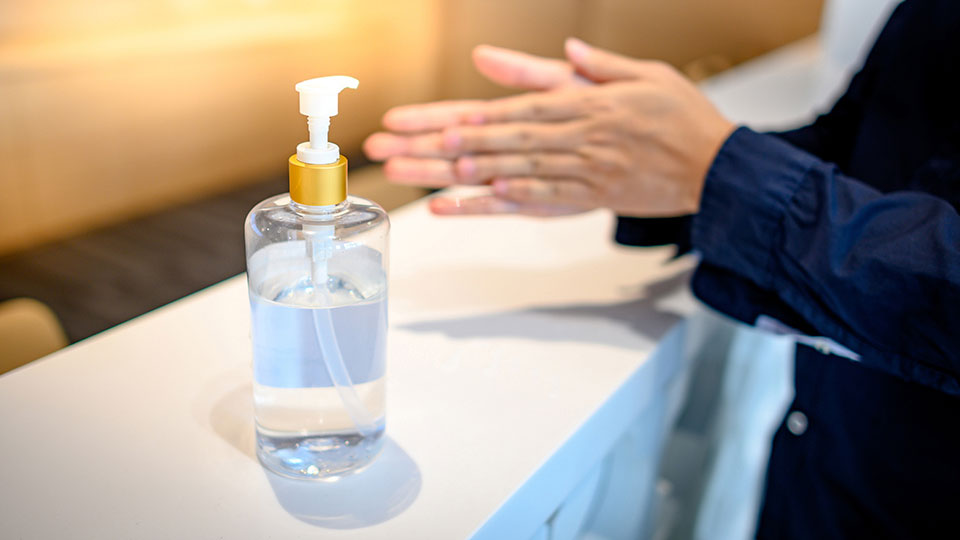Introduction
H1N1 is considered highly contagious and spreads from person to person most likely in a couple of different ways: when an ill person sneezes or coughs, the infected droplets can enter another person through the nose, mouth, or eyes; or the droplets can land on a contact surface (e.g. a doorknob) that is then touched by another person who then puts his/her hand up to their face. Because H1N1 is a new variant virus, most people do not have immunity and may become ill or even die.
The following guidelines have been prepared specifically for Janitorial, Cleaning and Maintenance Staff and will address the following:
- Measures to reduce the risk of infection for janitorial cleaning personnel.
- Routine cleaning procedures to reduce the risk of transmission during flu season or for any high risk community.
- Additional cleaning procedures during an H1N1 flu outbreak.
1. Measures to reduce the risk of infection for cleaning personnel.
Adults who are ill with the H1N1 virus can infect others one day before having symptoms and for up to one week after becoming sick. Children can be contagious for several weeks. The symptoms of H1N1 are similar to any other flu illness. Therefore, cleaning personnel should take the following steps to reduce their risk of infection during an outbreak of the H1N1 virus and other strains of influenza during the regular flu season:
- Wash hands frequently with soap and water and proper hand washing technique*. If soap and water are not available, use a hand sanitizer containing at least 62% alcohol.
- Treat hands as potentially contaminated and avoid touching the nose and eyes.
- Sneeze or cough into a disposable tissue and discard it immediately in a wastebasket.
- If you are sick with the flu, stay away from work and other people for at least 7 days if possible and until you have no fever for 48 hours.
2. Effective and routine cleaning procedures can reduce the risk of transmission during flu season or for any high risk community.
Effective cleaning emphasizes the physical removal of unwanted contaminants and pollutants using an appropriate cleaning agent and method of application. If this is done frequently, then the risk of transmission of infectious agents is considerably reduced. Since flu viruses, including H1N1, can survive 8-12 hours on paper or cloth, 24-48 hours on nonporous surfaces like doorknobs or desks, and up to 72 hours on wet surfaces, they can remain contagious overnight in an office or school that is not properly cleaned. The cleaning procedure may employ a variety of cleaning and disinfecting agents. Remember that merely the application of a disinfectant is not a substitute for cleaning. In that regard, the following are important considerations:
- If using EPA registered disinfectants or cleaning/disinfectant products with demonstrated (proven) virucidal claims against flu viruses, remember to check the manufacturer’s instructions on “spectrum of action” and method of use (dilution, contact time, etc.). If using a product that’s labeled only for use as a disinfectant, remember that by federal law, the surfaces to be treated are required to be cleaned first.
- While bleach is often used by itself, it does not clean, is highly corrosive to metals and is hazardous to skin, mucus membranes, and the respiratory system. If household bleach is used, an effective solution would require 1 part bleach for 10 parts water. Some bleach or other cleaning products (e.g. in spray form) may not require dilution and can be used “neat”. Regardless, always check the cleaning product’s label for use, dilution instructions and cautions.
- Launder or replace potentially contaminated cleaning cloths and sponges between cleaning periods.
- Wear appropriate protective equipment: gloves and splash protection (a face mask to prevent droplets containing flu virus from entering the eyes, nose, or mouth while cleaning).
- Clean surfaces that are touched by the hands or face diligently:
Doorknobs, light switches, elevator buttons, remote controls, handrails,
Computer keyboards and mice, telephones, microphones,
Cafeteria tables and chairs, coffeemakers, and vending machines. - Supply break rooms with dishwashing detergent and paper towels; clean and renew sponges frequently.
- Renew bathroom supplies diligently: soap, disposable paper towels, effective waterless hand sanitizer, posters demonstrating proper hand washing procedure. Repair nonfunctioning air dryers ASAP.
3. Additional cleaning procedures during an H1N1 community outbreak or confirmed cases in your building(s).
The H1N1 flu virus is effectively killed by bleach-based products or EPA registered disinfectants or cleaning/disinfectant products with demonstrated (proven) virucidal claims against flu viruses and effective cleaning protocols as previously described. However, during an H1N1 flu outbreak the following additional cleaning procedures are advisable:
- Touch points in high-traffic rooms and common areas (e.g. door handles for a main entrance) should be disinfected a minimum of 3 times daily.
- Disinfectant “bombs” that set off a dry disinfectant meant to cover every surface in an enclosed room are recommended for certain crowded facilities such as schools.
- Consider supplying individual offices and classrooms with disinfectant wipes and hand sanitizer.
- Remove all reusable utensils, plates, cups, sponges, and towels from break rooms and cafeterias; replace with disposable goods.
- Every business cleaning service should have a planned cleaning procedure to be used in an H1N1 flu pandemic, as well as a contingency plan should the janitorial staff become ill and unable to work.
* Further information on the correct hand washing techniques is available for free in a downloadable brochure called "Proper Hand Washing".
References
- Swine flu: preventing spread in the home and community. International Scientific Forum on Home Hygiene. April 2009.
- H1N1 Fact Sheet For Cleaning Professionals.
- Updates on swine flu are regularly posted on the Centers for Disease Control website www.cdc.gov
Developed by the Simmons Center for Hygiene and Health in Home and Community in collaboration with the Cleaning Industry Research Institute (CIRI) August 2009

